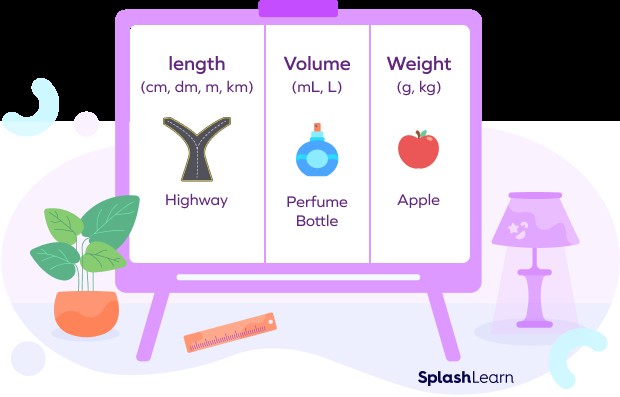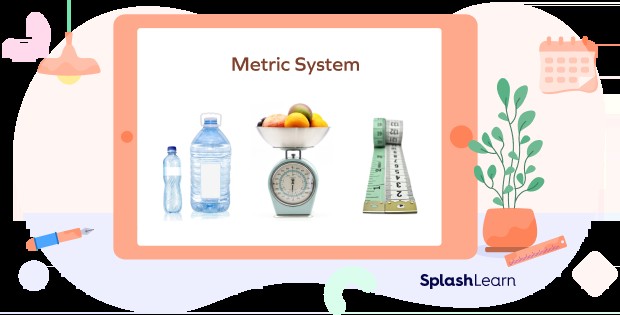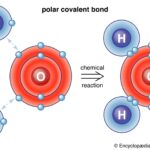What Is The Metric System? It’s a decimalized system of measurement based on units like the meter, liter, and gram. This system simplifies conversions and is used worldwide for science, industry, and everyday life. Discover its significance, advantages, and how it compares to other measurement systems with WHAT.EDU.VN, and explore our website for a wealth of educational resources.
1. Understanding the Metric System
The metric system, also known as the International System of Units (SI), is a decimal-based system of measurement used globally in science, industry, and everyday life. It provides a standardized and easily convertible way to measure length, mass, time, temperature, and other physical quantities.
1.1. History of the Metric System
The metric system originated in France during the French Revolution in the late 18th century. It was designed to replace the diverse and often inconsistent local units of measurement with a unified, rational system based on decimal multiples.
1.2. Key Features of the Metric System
- Decimal-based: All units are related by powers of 10, making conversions simple.
- Standardized: Provides a consistent system of measurement across different fields and countries.
- Base Units: Uses base units for fundamental quantities, from which other units are derived.
- Prefixes: Employs prefixes to denote multiples and submultiples of the base units.
1.3. Base Units in the Metric System
The International System of Units (SI) defines seven base units, each representing a fundamental physical quantity:
| Base Unit | Quantity | Symbol |
|---|---|---|
| Meter | Length | m |
| Kilogram | Mass | kg |
| Second | Time | s |
| Ampere | Electric Current | A |
| Kelvin | Thermodynamic Temp. | K |
| Mole | Amount of Substance | mol |
| Candela | Luminous Intensity | cd |



These base units form the foundation of the metric system, and all other units are derived from them.
2. Common Metric Units and Their Conversions
The metric system offers a variety of units to measure different quantities. Here are some of the most commonly used units and their conversions:
2.1. Length
The base unit for length is the meter (m). Other common units include:
- Kilometer (km): 1 km = 1000 m
- Centimeter (cm): 1 cm = 0.01 m
- Millimeter (mm): 1 mm = 0.001 m
2.2. Mass
The base unit for mass is the kilogram (kg). Other common units include:
- Gram (g): 1 g = 0.001 kg
- Milligram (mg): 1 mg = 0.000001 kg
2.3. Volume
The base unit for volume is the liter (L). Other common units include:
- Milliliter (mL): 1 mL = 0.001 L
- Cubic Meter (m³): 1 m³ = 1000 L
2.4. Time
The base unit for time is the second (s). Other common units include:
- Minute (min): 1 min = 60 s
- Hour (h): 1 h = 3600 s
2.5. Temperature
The base unit for temperature is the Kelvin (K). However, Celsius (°C) is more commonly used in everyday life.
- Celsius to Kelvin: K = °C + 273.15
3. Advantages of Using the Metric System
The metric system offers several advantages over other measurement systems, making it the preferred choice for science, industry, and international trade.
3.1. Simplicity and Ease of Use
The decimal-based nature of the metric system simplifies calculations and conversions. Since units are related by powers of 10, converting between units is as easy as multiplying or dividing by 10, 100, 1000, etc.
3.2. Universality and Standardization
The metric system is used by almost all countries in the world, making it the standard for international communication and trade. This universality reduces confusion and errors in global transactions.
3.3. Scientific Accuracy
The metric system provides a precise and consistent framework for scientific measurements. Its base units are defined by physical constants, ensuring accuracy and reproducibility in scientific experiments.
3.4. Efficiency in Calculations
The decimal structure of the metric system makes it easy to perform mathematical operations. This is particularly important in fields like engineering and physics, where complex calculations are common.
4. Metric Prefixes: Understanding Multiples and Submultiples
Metric prefixes are used to denote multiples and submultiples of the base units. These prefixes make it easy to express very large or very small quantities in a concise and understandable way.
4.1. Common Metric Prefixes
Here’s a table of the most common metric prefixes:
| Prefix | Symbol | Factor | Example |
|---|---|---|---|
| Kilo | k | 10^3 (1000) | 1 kilometer (km) = 1000 meters (m) |
| Hecto | h | 10^2 (100) | 1 hectoliter (hL) = 100 liters (L) |
| Deca | da | 10^1 (10) | 1 decagram (dag) = 10 grams (g) |
| Deci | d | 10^-1 (0.1) | 1 decimeter (dm) = 0.1 meters (m) |
| Centi | c | 10^-2 (0.01) | 1 centimeter (cm) = 0.01 meters (m) |
| Milli | m | 10^-3 (0.001) | 1 milligram (mg) = 0.001 grams (g) |
| Micro | µ | 10^-6 (0.000001) | 1 micrometer (µm) = 0.000001 meters (m) |
| Nano | n | 10^-9 (0.000000001) | 1 nanosecond (ns) = 0.000000001 seconds (s) |
4.2. Using Metric Prefixes in Conversions
To convert between units with different prefixes, simply multiply or divide by the appropriate power of 10. For example:
- To convert 5 kilometers (km) to meters (m): 5 km * 1000 = 5000 m
- To convert 2500 grams (g) to kilograms (kg): 2500 g / 1000 = 2.5 kg
5. The Metric System vs. the Imperial System
The imperial system, also known as the U.S. customary system, is primarily used in the United States and a few other countries. It includes units like inches, feet, pounds, and gallons. While both systems measure the same physical quantities, they differ significantly in their structure and ease of use.
5.1. Key Differences
| Feature | Metric System | Imperial System |
|---|---|---|
| Base | Decimal | Non-decimal |
| Conversions | Easy, based on powers of 10 | Complex, with arbitrary factors |
| Universality | Used worldwide | Primarily used in the United States |
| Scientific Use | Standard in science | Rarely used in science |
5.2. Conversion Challenges
Converting between the metric and imperial systems can be challenging due to the arbitrary conversion factors. For example:
- 1 inch = 2.54 centimeters
- 1 pound = 0.453592 kilograms
- 1 gallon = 3.78541 liters
These conversions require memorization or the use of conversion tools.
5.3. Why the Metric System is Preferred
The metric system’s simplicity, universality, and scientific accuracy make it the preferred choice for most applications. Its decimal-based structure simplifies calculations and reduces the risk of errors, while its widespread adoption facilitates international communication and trade.
6. Practical Applications of the Metric System
The metric system is used in a wide range of applications, from everyday measurements to advanced scientific research.
6.1. Everyday Life
- Cooking: Recipes often use metric units like milliliters and grams.
- Shopping: Products are typically labeled with metric weights and volumes.
- Travel: Distances are often measured in kilometers, and fuel is sold in liters.
- Health: Body weight and height are commonly measured in kilograms and meters.
6.2. Science and Technology
- Research: Scientists use the metric system for accurate and consistent measurements.
- Engineering: Engineers rely on metric units for designing and building structures.
- Medicine: Medical professionals use metric units for dosages and measurements.
- Manufacturing: Industries use the metric system for precise manufacturing processes.
6.3. International Trade
- Exports and Imports: Products are labeled with metric units for international trade.
- Global Standards: The metric system is the basis for international standards and regulations.
7. Tips for Mastering the Metric System
Learning the metric system can be easy with a few simple tips:
7.1. Start with the Basics
Begin by understanding the base units (meter, kilogram, second) and their symbols (m, kg, s).
7.2. Learn Common Prefixes
Memorize the most common prefixes (kilo, centi, milli) and their corresponding factors (1000, 0.01, 0.001).
7.3. Practice Conversions
Practice converting between units using the decimal relationships. For example, convert meters to kilometers, grams to kilograms, and liters to milliliters.
7.4. Use Real-World Examples
Apply the metric system in your daily life. Measure distances in kilometers, weigh groceries in grams, and measure liquids in milliliters.
7.5. Use Online Resources
Take advantage of online resources like conversion calculators, tutorials, and practice quizzes.
8. Common Misconceptions About the Metric System
There are several common misconceptions about the metric system. Let’s clear up a few:
8.1. It’s Too Complicated
The metric system is often perceived as complicated, but it is actually very simple once you understand the basic principles. The decimal-based structure makes conversions easy and intuitive.
8.2. It’s Only Used in Science
While the metric system is essential in science, it is also widely used in everyday life. Many products, recipes, and measurements are based on metric units.
8.3. It’s Difficult to Learn
Learning the metric system is not difficult. With a little practice and the right resources, anyone can master the basics and use it effectively.
9. The Future of Measurement Systems
The metric system is likely to remain the dominant system of measurement worldwide. Its advantages in simplicity, universality, and scientific accuracy make it the ideal choice for the future.
9.1. Continued Adoption
As more countries adopt the metric system, it will become even more important for international communication and trade.
9.2. Advancements in Technology
Technological advancements may lead to new and improved measurement tools based on the metric system.
9.3. Importance of Education
Continued education and promotion of the metric system will help ensure its widespread understanding and use.
10. Frequently Asked Questions About the Metric System
What are metric prefixes?
Metric prefixes are used to denote multiples and submultiples of the base units. Common prefixes include kilo (1000), centi (0.01), and milli (0.001).
How did people measure things before the metric system?
Before the metric system, people used various local and regional systems of measurement. These systems often lacked standardization and were based on arbitrary units.
How is the metric system different from the imperial system?
The metric system is decimal-based, while the imperial system is not. The metric system is used worldwide, while the imperial system is primarily used in the United States.
Is meter a unit of distance?
Yes, the meter is the base unit of length in the metric system. It is used to measure distances, lengths, and heights.
What is the importance of the metric system?
The metric system simplifies calculations, facilitates international communication, and ensures accuracy in scientific measurements.
Why does the U.S. not use the metric system?
The U.S. has historically resisted adopting the metric system due to cultural and economic factors. However, the metric system is used in many industries and scientific fields in the U.S.
How do I convert from imperial to metric units?
You can use conversion factors or online conversion tools to convert between imperial and metric units. For example, 1 inch = 2.54 centimeters, and 1 pound = 0.453592 kilograms.
Where can I find more information about the metric system?
You can find more information about the metric system on websites like the National Institute of Standards and Technology (NIST) and the International Bureau of Weights and Measures (BIPM).
| Topic | Question | Answer |
|---|---|---|
| Base Units | What are the fundamental units in the metric system? | Meter (length), Kilogram (mass), Second (time), Ampere (electric current), Kelvin (temperature), Mole (amount of substance), Candela (luminous intensity). |
| Prefixes | How do metric prefixes simplify measurements? | Prefixes denote multiples and submultiples of base units, making it easy to express large or small quantities. Examples: kilo (1000), milli (0.001). |
| Conversions | What is the easiest way to convert between metric units? | Since the metric system is decimal-based, convert by multiplying or dividing by powers of 10. |
| Universality | Why is the metric system considered universal? | It is used by almost all countries worldwide, standardizing measurements and facilitating international communication and trade. |
| Daily Use | Where do we commonly use the metric system in daily life? | Cooking (milliliters, grams), shopping (product weights/volumes), travel (kilometers, liters), and health (kilograms, meters). |
| Science & Technology | Why is the metric system important in science and technology? | Provides a precise and consistent framework for scientific measurements, essential for research, engineering, and medicine. |
| Imperial vs. Metric | What are the main differences between metric and imperial? | Metric is decimal-based, universal, and used in science. Imperial is non-decimal, primarily used in the U.S., and less common in scientific applications. |
| Learning Tips | How can I master the metric system effectively? | Start with base units, learn prefixes, practice conversions, use real-world examples, and utilize online resources. |
| Common Misconceptions | What are some common misconceptions about the metric system? | That it’s too complicated, only used in science, or difficult to learn. In reality, it’s simple once understood, widely used, and easy to master with practice. |
| Future Trends | What is the future of measurement systems? | Continued adoption of the metric system, technological advancements in measurement tools, and the importance of ongoing education. |
11. Call to Action
Are you tired of struggling with complicated measurement systems? Do you need quick and reliable answers to your questions? Visit WHAT.EDU.VN today and discover the ease and convenience of our free question-and-answer platform. Our team of experts is ready to provide you with accurate information and guidance on the metric system and many other topics. Don’t let your curiosity wait – ask your question now and unlock a world of knowledge!
Contact us:
- Address: 888 Question City Plaza, Seattle, WA 98101, United States
- WhatsApp: +1 (206) 555-7890
- Website: what.edu.vn
